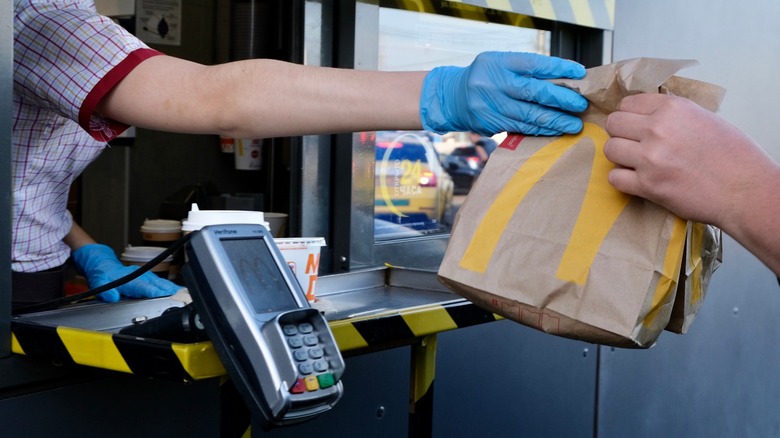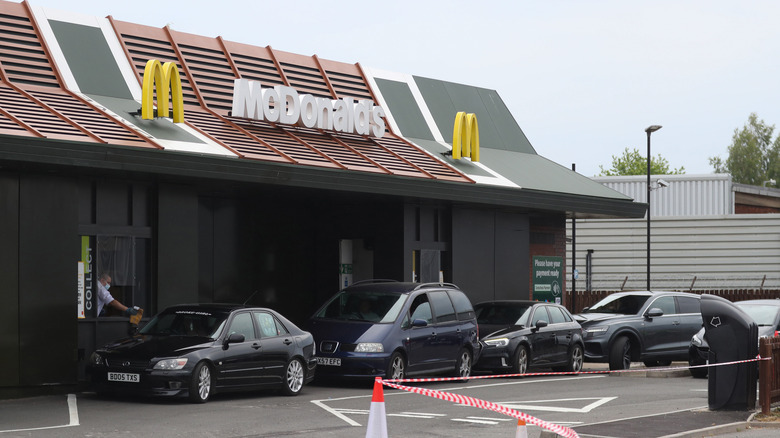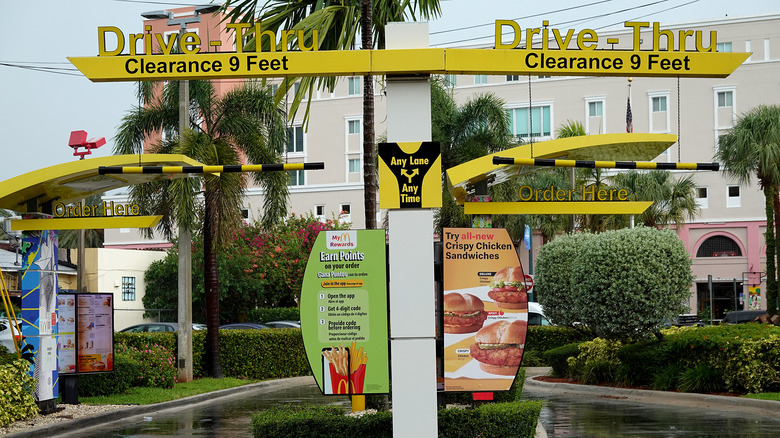McDonald's Drive-Thrus Were Created With The Military In Mind
There simply aren't a lot of things people don't already know about McDonald's. It is, after all, the globally ubiquitous leader in quick and affordable burgers. With over 36,000 locations worldwide, it generates tens of billions of dollars in a single year (via Nation's Restaurant News).
This domination dates back to 1940, per the Encyclopedia Britannica, when the McDonald brothers opened up a drive-in (which is different from a drive-thru). However, their restaurant seriously took off in 1948, when the brothers narrowed its menu down in order to cheaply and efficiently mass produce food for huge profits — something that still rings true to this day. Soon enough, the McDonald's chain was franchising and quickly spreading far afield.
Nowadays, McDonald's is iconic in many ways. There are the fast food favorites like the Big Mac, Egg McMuffin, and Happy Meal, and then there are the symbols such as the Golden Arches, Hamburger University, and Ronald McDonald. Can you even imagine a McDonald's without a drive-thru, though? That was once a very real thing, and the story behind the eventual change is something even the biggest Mickey-D's fans might not know about.
McDonald's didn't have drive-thrus for decades
Even though McDonald's started as a drive-in, it didn't actually adopt drive-thrus until fairly late in the game. The first drive-thru might technically have come in 1931 from a Texan eatery chain known as the Pig Stand, according to History. That chain also started as a drive-in, where people eat in their cars but don't order from inside of them. However, one particular Pig Stand location eventually let its customers order at an outer window, though this may have only been a walk-up system.
As a result, the first undisputed drive-thru is usually said to have been In-N-Out, the California burger chain. In-N-Out unveiled its drive-thru back in 1948 (coincidentally, the same year McDonald's first reworked its menu). In-N-Out's setup was complete with a drive-thru window and intercom system, lacking indoor seating and even parking.
Such a design increases speed and efficiency, further generating profit. Yet, it still took some big names, like McDonald's, a while to accept the idea. Fast forward to today, and drive-thrus are everywhere. They were especially essential in recent years due to the pandemic, as noted by QSR Magazine, given that dine-in was off the table for a time. In 2020, for example, 70% of McDonald's total sales came from the drive-thru. Obviously, though, McDonald's already had drive-thru available pre-pandemic. So, exactly when and why did McDonald's embrace the concept?
'70s soldiers couldn't dine in
Money talks, and yes, that is why the chain eventually installed its drive-thrus, but there's more to it than just that. McDonald's recounts how a regional manager originally advocated for a drive-thru at an Oklahoma City location, simply because they thought it would make good financial sense there. However, as told by The Arizona Republic, the Oklahoma City site's plans got delayed by a time-intensive desire to entirely remodel its store, install a columned roof garden, and put up statues of McDonaldland characters. This took time.
Meanwhile, in Sierra Vista, Arizona, one McDonald's was losing out on business because it was located by the Fort Huachuca Army Base, which had a rule that soldiers in uniform needed to remain inside their vehicles while off base. So, those soldiers were regularly avoiding McDonald's in favor of drive-thru alternatives. As a result, McDonald's ended up hastily making its Sierra Vista location the first of its drive-thru sites in 1975. This setup was a simple sliding window, with no garden roof or colorful statues. Even so, it was extremely effective at luring in new business.
Within just a handful of years, over half of all McDonald's locations at the time had followed suit. The original Sierra Vista building was eventually torn down. However, a new McDonald's can still be found at that same location, bearing a plaque that commemorates its contribution to Mickey D's history.


